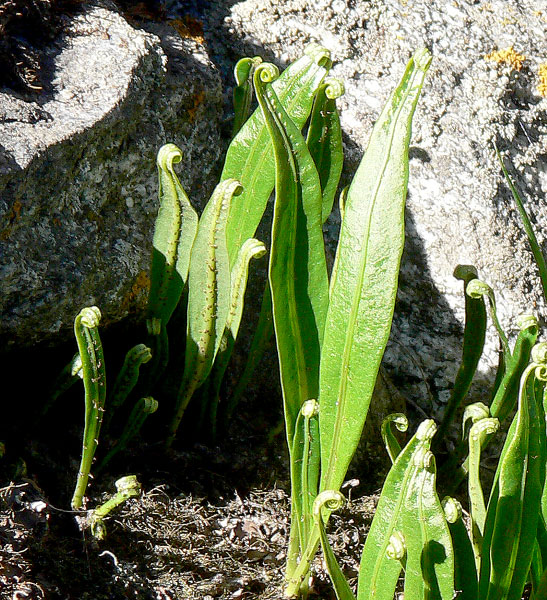|
Lepisorus scolopendrium (Ching) Mehra & Bir, Res. Bull. Punjab Univ., New Ser., Sci. 15: 168 (1964) (syn: Lepisorus excavatus var. himalayensis Bir & Trikha ; Lepisorus excavatus var. mortonianus Bir & Trikha ; Lepisorus himalayensis (Bir & Trikha) Khullar & Pangtey ; Lepisorus kumaonensis Kholia, Bhakuni, R.Punetha & Bankoti ; Lepisorus mortonianus (Bir & Trikha) Khullar ; Lepisorus scolopendrium var. himalayensis (Bir & Trikha) Pangtey & Punetha ; Lepisorus virescens Ching & S.K.Wu ; Pleopeltis excavata var. himalayensis (Bir & Trikha) Benl ; Pleopeltis excavata var. mortonianus (Bir & Trikha) Benl ; Pleopeltis himalayensis (Bir & Trikha) Á.Löve & D.Löve ; Pleopeltis mortonianus (Bir & Trikha) Á.Löve & D.Löve; Lepisorus excavatus var. scolopendrium Ching ; Pleopeltis scolopendrium (Ching) Alston & Bonner ; Polypodium scolopendrium Buch.-Ham. ex D.Don );
.
Himalaya to S. China and Indo-China: Assam, China South-Central, East Himalaya, Hainan, Laos, Myanmar, Nepal, Thailand, Tibet, West Himalaya as per POWO;
.
I came across just one specimen during my week-long trip.
Badrinath, Uttarakhand, June 09.
Looks like a fern species ?
I think this is pteridophyte Pleopeltis Pteridophyte pleopeltis shown at flickr.com/photos/alan_cressler/2253529292/ is quite different from the one I had posted. The pteridophytes are vascular plants (plants with xylem and phloem) that neither flower nor produce seeds, hence they are called vascular cryptogams. Instead, they reproduce and disperse only via spores as per link: http://en.wikipedia.org/wiki/Pteridophyte Did you take a close-up pix of the yellow spots on the rocks in the background in both the pix. Appears to be rust/fungus. ID anyone. Yes! It is Lepisorus scolopendrium, Polypodiaceae, very common throughout the Indo Himalaya.
You can just see the round raised spots above and towards the tips of the fronds, where the young sori are just beginning to develop on the underside.
. References: |
Disclaimer
1. For any mistake in identification or for becoming efloraofindia e-group member (for contributing towards building of efloraofindia or otherwise), pl. mail to indiantreepix@googlegroups.com or itpmods@googlegroups.com
2. For better viewing of species’ pages, colour scheme & formatting is being followed as: Description of the species, Details of other flora species on the same page, Uses/ harms, Distribution, Abundance/ Location/ Flowering time & date, Habit & habitat, Etymology & pronunciation, Other interesting information, stories etc., Others, Botanical names, Common names, Main point of discussion below, Discussion about Botanical names.
Navigation
- Award for eFloraofIndia
- Colour scheme & formatting
- Copyrights, Permissions, Citations
- eFloraofIndia appreciated
- Names of Plants in India site
- Flowersofindia site
- Posting Guidelines
- For members’ information
- Logo, Tagline, Acronym
- Volunteers required
- ‘Pitamah’ of eFloraofIndia
- ‘अजेय’ ‘Ajey’ of eFloraofIndia
- ‘Saarthi’ ‘सारथि’ of eFloraofIndia
- ‘Jewel’ of eFloraofIndia
- ‘Grassman’ of eFloraofIndia


